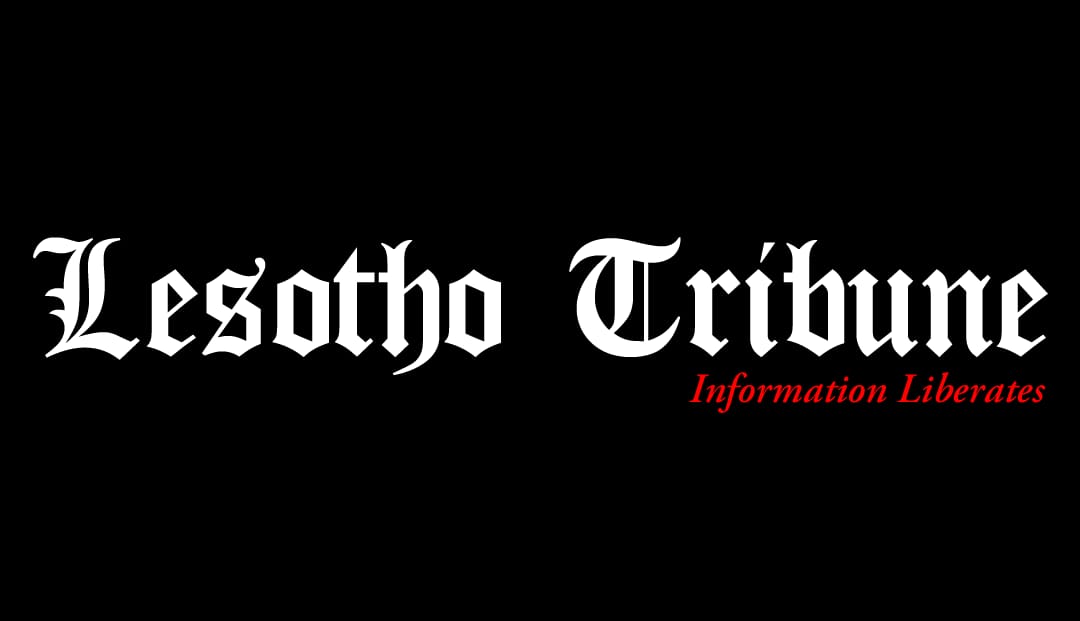Maseru- The Central Bank of Lesotho (CBL) held a dialogue with Lesotho Lesotho’s revenue collecting ministries at Lehakoe Recreational on Wednesday, focussing on key issues on counterfeit money handling.
The discussion covered counterfeit notes, currency circulation and the proper treatment of mutilated and dye stained notes, additionally security features on banknotes were highlighted and the concerns were raised about legality of denying customers services due to the refusal of the SA rand and coins (10c and 20c) as well as steps to verify the authenticity of bank notes.

The panel discussion was chaired by Finance Revenue, Ms. Litlhare Phori, Acting Director of Operations, Mrs. Mamokhali Shale, Head Legal, Mr. Thato Ramoseme, Currency Analyst Statistics and Forensic, Mrs. PalesaManosa and also Analyst Planning, Mr. Thebe Ntho.
In her opening remarks, DIrector of Operations, Mamokhali Shale outlined the purpose of the meeting, citing public concern over businesses refusing to accept coins, and rands due to recent bank robberies in SA ATM’s.
She added that the meeting intends to educate ministries on proper cash handling practices, including ways to identify counterfeit currency. Shale also touched on the CBL mandate under the Act of 2000 which focuses on maintaining stability of prices and ensuring that loti remains equivalent to the rand. Also adding that the CBL main mandate is to issue and redeem deteriorated money from the circulation.
She commended the presence of mobile money operators, acknowledging their significant role in supplementing cash circulation and also addressing challenges related to physical currency.
According to the Head of Legal at the Central Bank of Lesotho, Thato Ramoseme stated that the decision by Basotho entities to refuse South African Rand ( SAR) has sparked disruption in economic transactions and also threatens the smooth functioning of government operations.
In addition, the move is viewed as a breach of the Common Monetary Area (CMA) agreement which binds four countries namely, Botswana, Namibia, Eswatini and South Africa. “ The CMA agreement facilitates the use of shared currency (rand) to promote smooth trade and economic stability also making an example that if Lesotho would seek currency independence and use only Loti, it has slight opportunity to benefit rather destabilise the economy,” he explained
Ramoseme stressed that the refusal of coins and a rand by businesses also undermines the principles of CMA agreement, adding that the rejection leads to economic disruption, heightened cost , and currency instability. He further urged all communities to accept rand and coins before Lesotho can face far-reaching repercussions.
“The benefits of the CMA Include reduced transaction, enhanced economic integration and price stability as most transactions will be efficiently conducted using rand without changing or separating currency for trade,’’ he noted
Ramoseme said like the CBL the Southern African Reserve Bank ( SARB)’s role is to issue, circulate and decommission the currency, partnering together CBL and SARB ensures smooth flow of rand which is both accepted as a legal tender
alongside Lesotho’s currency (Loti)
He cited that the collaboration is governed by the CBL Act of 2000, according to the act section 6(b) and 23 show the mandate (issuing, circulation and decommission) of currency, while section 22 officially recognises the rand’s circulation, section 7 emphasises the promotion of currency union under the CMA.
He commended that SARB and CBL ensures monetary stability in Lesotho as the rand strengthens support liquidity and economic integration between the two countries. “ Lesotho would be absolutely nothing without rand,” he said
Currency Analyst -Statistics and Forecasting, Ms. Palesa Manosa raised concerns about the increasing risk of counterfeit money, she emphasised that counterfeit money is the imitation of genuine currency produced without legal authorisation from the CBL and used to deceive recipients for financial gain.
“Counterfeit notes presents risk to the economy , those who use fake money for payments do so fraudulently which results in economic losses,” she stressed
However, She clarified that if counterfeit currency is found and seized before being circulated the economy remains unaffected , it’s only when the money changes hands the damage is done.
Manosa also cited the Lesotho penal code of 1979, which states that any person found in possession of fake money commits an offence if they know or have reason to believe the currency is fake. Additionally section 30 of the CBL Act of 2000 gives the central bank the authority to authenticate and verify counterfeit currency and such verification can work as the prima facie in the court of laws.
Manosa highlighted that counterfeiters often target higher denominations as the M200, M100 and M50 notes which lead to a loss of confidence in the country;sfinancial system and further deteriorate the economy.
She said in efforts to protect the integrity of the currency the CBL through its integrity office has initiatives such as money week continues to educate the public and all financial institutions on how to detect counterfeit money.
“ It’s vital to know all the security features of all bank notes and use detection methods to such as the UV light but most importantly people need to be more vigilant when examining money,” She urged
She said CBL ensures that there is quality and durability of currency in circulation , however they are also challenged with issues of mutilated banknotes and soiled notes. “ Mutilated bank notes are those that are inked, burned, torn and require special examination before they can be examined, in order for them to be exchanged they need to at least retain two-thirds of its form,” she explained
In contrast, soiled banknotes such as slightly cut or taped notes should be accepted as legal tender in order to be returned to the CBL for removal from the circulation. She noted that intentionally mutilating or defacing currency is illegal as per section 28 of the CBL Act of 2000.
She concluded that after every five (5) years CBL introduces the new currency to ensure that counterfeits don’t flood the financial system excessively.
Also adding on Manosa’s remarks, Thebe Ntho said the other rising concern in the financial system is the increasing circulation of dye-stained notes which left many businesses at loss. He said CBL has put into place measures to address circulation of fake money by introducing protection devices (CPD) designed to stain notes during attempted theft such as ATM”s, Heist and cash-in-transit.
Ntho noted the two types of dye-stained notes namely ( controllable and uncontrollable dye-stained notes) – Controllable are the results from accidental discharges from commercial banks while uncontrollable are notes which have already entered the circulation after being stolen by criminals for financial gains.
He added that dye-stained notes, bleached or washed notes are increasingly becoming a problem. Adding that although the counterfeit notes may look genuine they are considered of no value as often people mistake them with real money.
Ntho delved into the security features of both the rand and loti, he said it’s very important to know all the currency security features , although some are invisible by mere looking. He noted that there are three (3) security levels which include:
“Level 1 ( General Public): the public can simply identify genuine money by feeling the texture, look at its details which include photos of animals and chiefs and also tilting the money. Level 2 (Banks and Retailers) , commercial banks use UV lights to verify money and also bank machines and ATMs can detect, the last one is Level 3 (Forensic) these feature is only known by the CBL operators only and police and other stakeholders only to request counterfeit money at CBL,” he informed
He listed the signs the notes have which include; microprinting, intaglio print, watermark, numbering, tactile marks, spark liv, latent image, anti copy screen, see through which are most visible by mere looking.
He further explained that money is made from security paper and special chemicals that when washed the chemicals react and make the notes lose value, addibthat the action can only be detected using the 360 nanometer UV lights.
Moreover, when notes are placed under the UV light they react differently depending on the value of a note, revealing other features that can not be seen by mere eyes.





